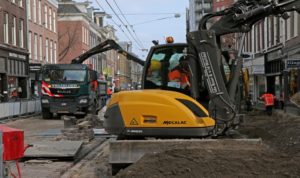Computer Cartography is the process of converting and representing the variations in topographic data symbolically in two dimensions. It also involves mathematical modeling.
On the contrary, GIS is a systematic process for data gathering, management, and analyses. It involves spatial data analysis and map creation/editing. The various geospatial information is gathered and arranged for a highly systemized visualization and 3D scenes.
GIS:
GIS uses 3D. It has the capability to analyze, sort, integrate, share or edit data and display spatially referenced data.
1. Presentation of the elements of the real world through models: In GIS, models similar to objects of the real world are carefully used to represent the elements that are in the real world.
2. Topology: It’s an important concept in the system of GIS and an essential in object modeling. More so, the ditto representation of real-world objects is made possible.
3. Layer technique: GIS strictly uses the layering technique in the representation of models. It analyzes spatial location and organizes the layers of information into visualization using maps and 3D.
4. Database: Meanings of the modeled objects are defined by the attributes/fields stored in the GIS database.
5. Tools: GIS have tools as well as the required techniques to manipulate and analyze the data. It integrates many types of data.
6. Unique Data: There’re no redundant or generalized data. Data presented in GIS is unique.
7. Integration of layers: Integrating various layers such as the raster layer to display subtle changes in tones and vector layer for lines and shapes. Switching between different models might be possible.
8. Printing and Plotting Tools: GIS is a way complex system. It possesses very few simple printing tools. Tools for plotting are also available in data output.
9. Representation: It is not what we say is what we get. Proper knowledge of GIS is a necessity.
10. Complexity: GIS is not straightforward. To carry out efficient analysis and manipulation of data, there is a need to go for Specialized Training.
CARTOGRAPHY:
Cartography deals with the study of making maps. It combines arts and science, aesthetics and techniques.
1. Representation of objects through Symbols: Cartography represents or creates unique rule-based map symbology to support different map purposes and scales that can be reused.
2. Topology: The topological concept is not important for cartography. The only necessary factor is a graphical representation. Hence, manipulation of data can be ignored without any issues.
3. Layer technique: It is not compulsory for you to use layers until and unless any special circumstance, such as if it’s about bridges or underpasses then strict usage of layering technique will be followed.
4. Symbolic: In GIS meaning or definition of the objects are defined by their stored attributes in the database while in Cartography meaning of the objects is defined strictly through the symbolization. The absence of prior information causes a negative impact because end representation might not be easily identified by a stranger.
5. Tools: Cartography contains 2D data visualization tools that aid in the analysis and representation of the data.
6. Generalized Data: A plethora of the input data in cartography is in general terms, and the information provided may not be correct.
7. Combination of layers: In cartography, data is represented symbolically by combining the layers associated with raster and vector.
8. Complex Printing: The printing is not straightforward because you have to conceive and frame it up from your mind before the software used in cartography could achieve good quality output.
9. Representation: In cartography, the data representation is “what you see is what you get” analogy since all end representations are in the form of symbols.
10. Complexity: Complexity level of Cartography is minimum. It’s way simpler to use as compared to GIS. The data deduced via cartography can be manipulated with ease. This underlines the simple nature of the software.



